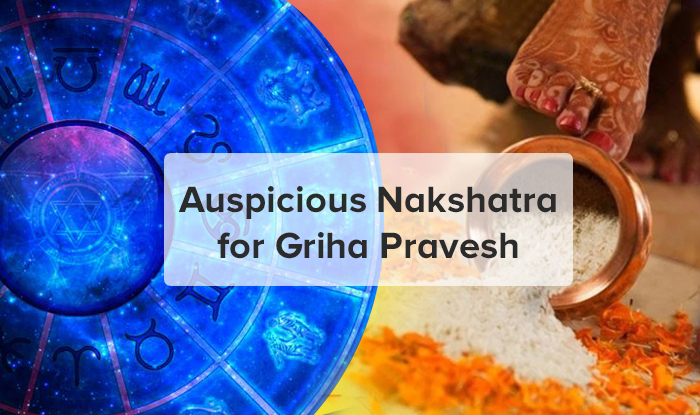In India, people are extremely particular when it comes to making a major move in their lives.
Whether it’s about starting a new business, buying a new vehicle, deciding a date for the marriage, or simply marking a date in the calendar to relocate into a new house, the Hindu astrology plays a significant role in their lives. As the Indian astrology strongly believes in the power of Nakshatras, people have too gained immense faith in this astrological concept for a long time.
Buying a new house depicts the struggle of a family. And, they just cannot compromise on anything when deciding on a date to move into their new home. Getting in touch with the astrologer or a Pandit is the first thing people do and then decide a particular date for their relocation into their dream home. As most of the Hindu astrology circulates around the auspicious stars called Nakshatras, good knowledge about them will certainly make your moving experience a pleasurable one for you and your family. Doing everything under the guidance of a good astrology expert will ward off all kinds of negativities and brings positivity in your new home.
Following are the best nakshatras for Griha Pravesh muhurat in 2021:
Good Nakshatras for Housewarming in 2020
1. Ashvini
Ashvini is governed by Ketu which is the descending lunar node. According to the electional astrology, Ashvini is named as a little group of stars, implying that it is accepted to be beneficial to start a new work of an exact or sensitive nature while the moon is in Ashvini. Since there is development related with Ashvini, it is a promising nakshatra to start anything new that prompts improvement in standards of living by moving from one place to another.
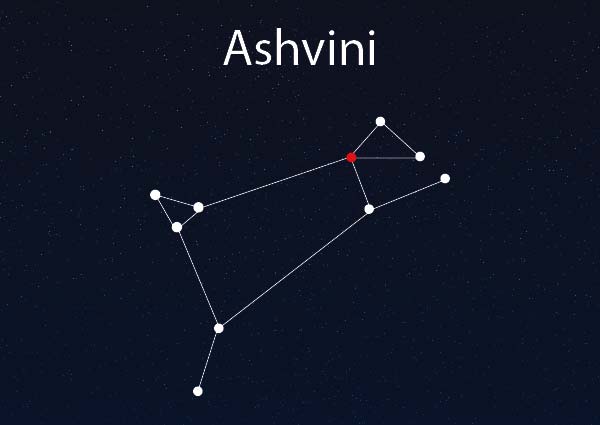
Therefore, it is an auspicious nakshatara to plan your relocation as it will bring prosperity and happiness in your new home.
2. Chitra
Chitra is related to an only star known as Spica (Alpha-Virginis) in the heavenly body of Virgo. It is perhaps the most brilliant star in the sky. Chitra takes the fourteenth position in the list of 27 nakshatras in Hindu astrology. The electional nature of Chitra is Mridu, “delicate” or “gentle.” For the architects and builders, Chitra is touted as a great nakshatra to begin their activities.
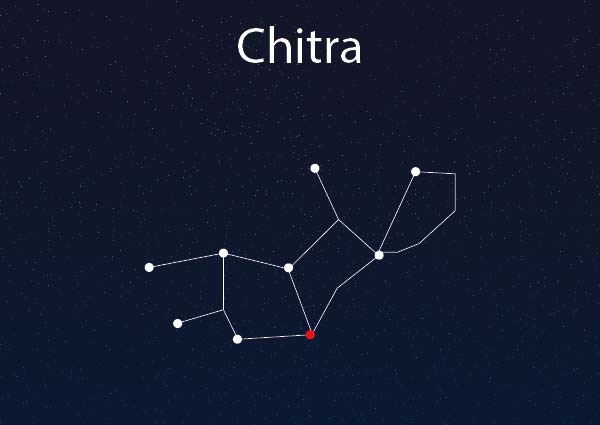
Chitra is a fantastic nakshatra for the following activities:
- Beginning an excursion
- Home repairs
- Interior designing
- Moving into a new home
3. Pushya
Pushya is interpreted as “nourisher” which communicates the quintessence of this star. The image of this nakshatra is the udder of a cow, again speaking of sustenance. The dairy animals are venerated in the Vedic custom and are an image of fruitfulness and profitability. This Nakshatra is auspicious for shifting into your new home as it signifies new beginnings.
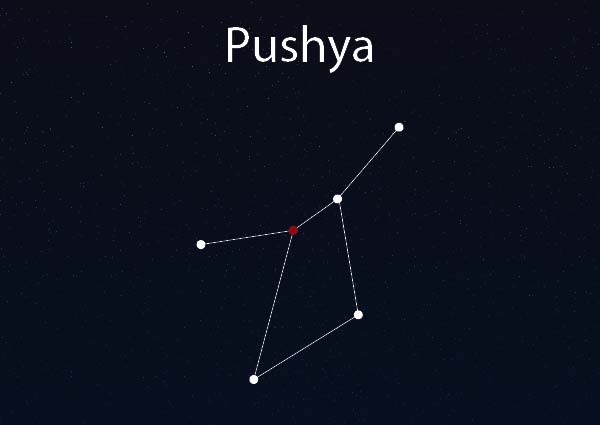
The electional idea of Pushya is Kshipra or Laghu, “quick” and “light.” Pushya is also a superb nakshatra for:
- Starting an excursion
- Undergoing a clinical treatment
- Gaining some new useful knowledge
- Athletic occasions and competitions
- Playing out any mending work
4. Shravana
Gazing upward into the night sky, Shravana comprises of the stars Altair, Alshain and Tarazed. These three stars structure together makes the head of Aquila, the Eagle. The word Shravana deciphers as “hearing” and the image of this star is the ear. It is a great nakshatra for buying property and socializing with people on an auspicious event.
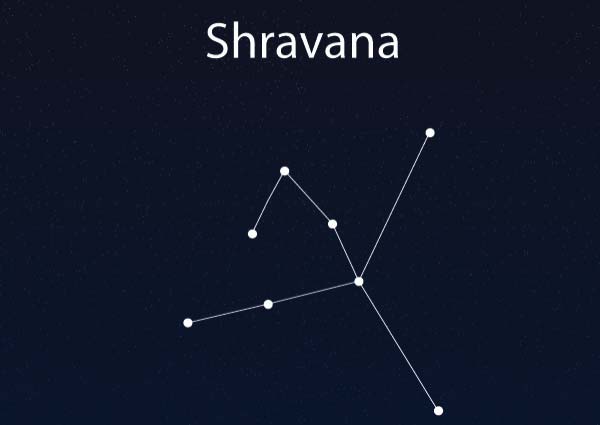
The electional idea of Shravana is Chara, which means “portable.” Shravana is a brilliant nakshatra for:
- Purchasing a vehicle
- Relocating home, employments, or other life changes
- Starting a journey
- Planting vegetables or differentyields, and general cultivating work
- Travel
5. Rohini
Rohini is the fourth of 27 nakshatras. In the night sky, it consists of the splendid star known as Aldebaran (Alpha-Tauri). The name Rohini interprets as “The Reddish One” which means the enthusiastic and bountiful warmth of this star. The image of a ox truck reflects business, richness, and the capacity to convey merchandise or thoughts.
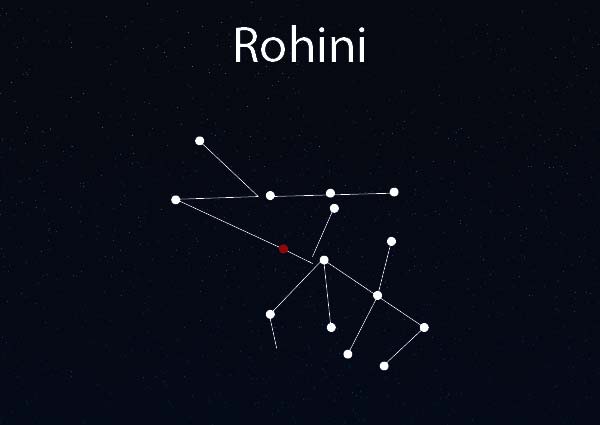
The electional idea of Rohini is Sthira,which means “fixed or consistent.” Rohini is an astounding nakshatra for:
- Marriage functions
- Building a home
- Buying land
- Planting trees
- Undergoing a clinical treatment
- Learning craftsmanship, music, or dance
6. Swati
Swathi (6.40-20.00 Libra) is the focal group of stars governed by Vayu, the God of the Wind. It identifies with the breeze, wind, and disposal of antagonism. It conjures implications of words like great going, freedom, sensitive and fragile. Swati is indicated in the night sky by the single star of Arcturus (Alpha-Bootis). This nakshatra deciphers as “Independent one.” The image of this nakshatra is a youthful plant blowing in the breeze, which speaks of adaptability and readiness just as eagerness. The ultimate god Vayu, the God of wind, presents a solid, yet delicate nature to this star. Business, exchange, mingling, purchasing/selling, craftsmanship and science, strategy, prepping of oneself are some of the activities which can be undertaken under this nakshatra.
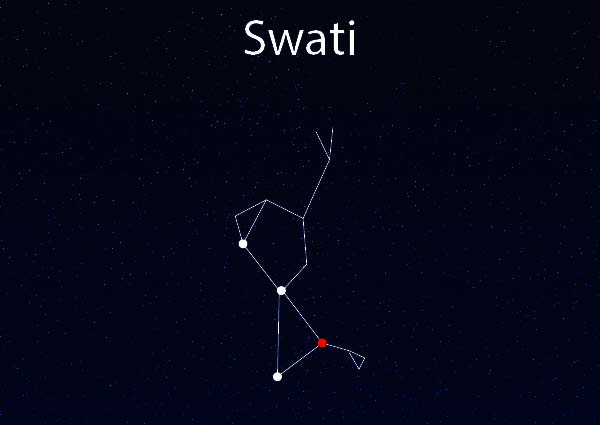
7. Hasta
Hastha (10.00-23.20 Virgo) speaks of the inventiveness of the Sun. The word Hastha converts into the ‘hand’ or it might be on the other hand deciphered as ‘chuckling’. The centrality of the latter one is that Hastha is frequently connected with punning. The image of the shut clench hand enables Hastha to accomplish objectives and great habits. Indeed, Hastha is frequently connected with the sun and the sunlight based rule, as it is identified with the Sun and its beams.
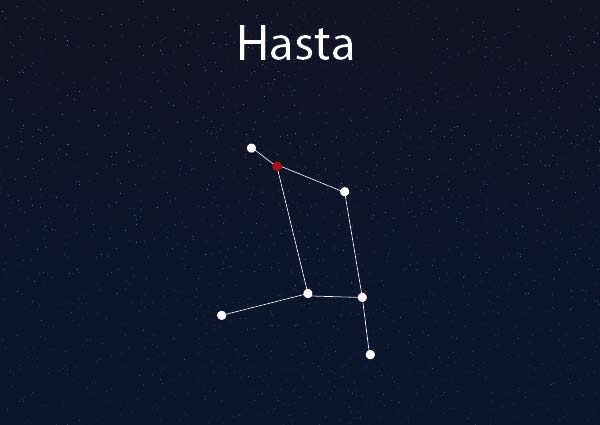
Hastha looks to get the family moving. It makes backing of civilized living, by making fantastic householders, with evident earnestness and good humor underneath. For the most part, this nakshatra is useful for all the activities such as workmanship and art, laughter inciting exercises, jewelry designing, pottery, linguistics, holistic methodology, magic, aptitudes of hands, managing kids, travel, and changing homes.
8. Dhanishtha
Dhanishta (23.20 Capricorn-6.40 Aquarius) is represented by Vasus, the God of the Flute. This star is known to ensemble the lives of others, being set under the care of Mars.
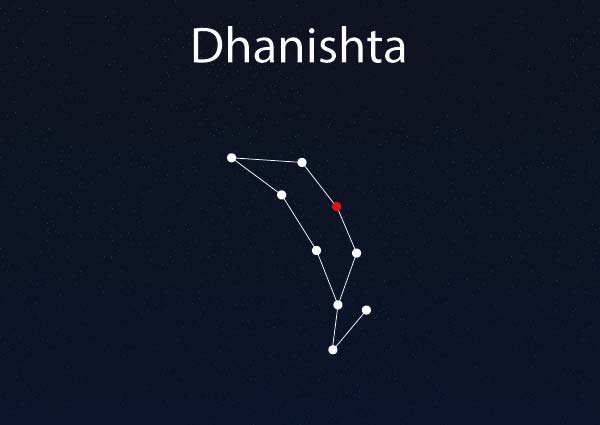
The Dhanishta heavenly body is additionally known to be drum-formed or dolphin-shaped. The term Dhanishta converts into ‘the most altruistic’ or ‘the wealthiest’. It is otherwise called the Shravishta, which is Sanskrit for ‘the acclaimed’ or ‘somebody who is the most known about’. It is obvious that Dhanishta is an authority of good life and that it has a wide range to its character. As one of the most expressive nakshatras, Dhanishta is versatile and adaptable.
Being profoundly flexible, this nakshatra can work in a wide range of professional fields particularly those that incorporate huge profits.
9. Mrigasira
Mrigasira (23.20 Taurus-6.40 Gemini) is governed by Soma, the Moon god who represents the undying nectar. Mrigasira is the initiator of Martian vitality who is spoken to in the heavenly atmosphere by a brilliant star and 3 moderately paler stars in the group of stars Orion.
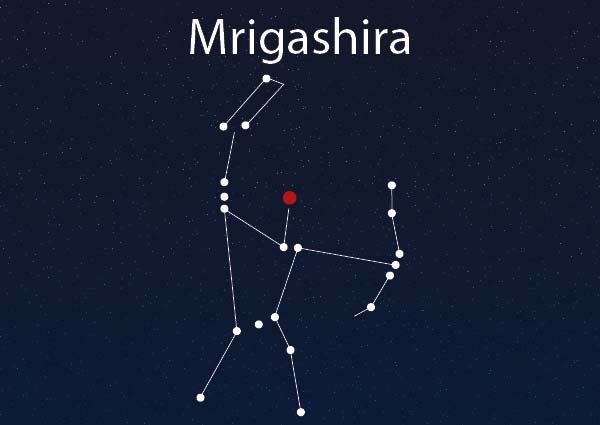
Mrigasira can be interpreted as the ‘deer head’ because of the shape that this heavenly body has. Different names for this nakshatra are Saumya which signifies ‘kind’, Chandra or Udupa which mean moon, and Arghayani or ‘beginning of the year’.
Mrigasira takes after the planet Rahu and its hunt brings satisfaction and edification. Light-hearted activities, travel, art and craft, healing and restoration, education, moving home, religion and spirituality, communication, sales and ads, or taking a new name are some of the favourable activities under this nakshatra.
10. Anuradha
Anuradha (3.20-16.40 Scorpio) is represented by Mitra, the Divine Friend. It encourages equalization and peace in relationships, respect and accomplishment of fame. It is a destroyer of foes and a specialist in craftsmanship and innovativeness.
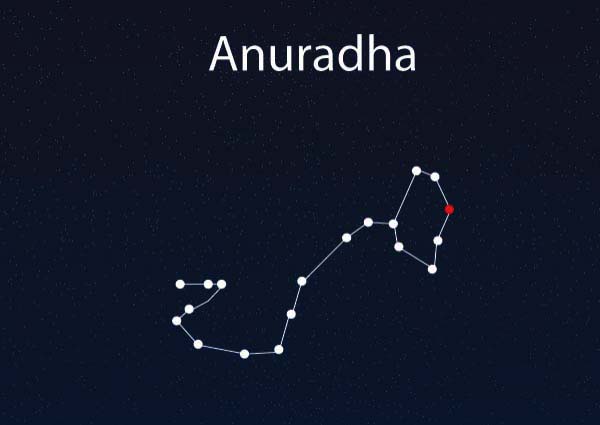
Anuradha converts into After Radha or Another Radha. On the other hand, it can designate ‘ensuing triumphs’. Regardless of the absence of obvious comparability, it is seen that Anuradha structures a couple with Vishakha, as Purvaphalguni and Uttaraphalguni. Anuradha centers around ‘investigation’, which is a good humored mix of network, individuals and vitality.
Anuradha is a ‘deva’/faithful nakshatra, with delicate nature that looks for congruity and comprehension at all levels for a typical cause. The electional nature of Anuradha is Mridu, “delicate” or “gentle.”
11. Uttara Ashadha
Utthar ashadha (26.40 Sagittarius-10.00 Capricorn) represents the peak of the cosmic vitality. It is represented by an elephant’s tusk, being administered by Vishwa Deva or Universal Gods, which makes it a permanent nakshatra.
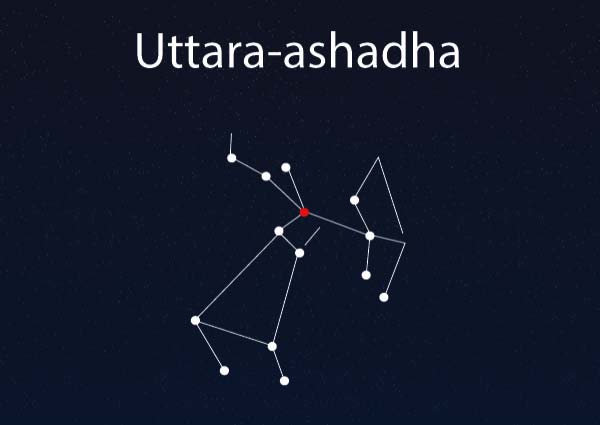
Utthar ashadha can be converted into the “Last Invincible One” or the “Last Unconquered”. It is clear from the import of the implying that Uttharashada is progressively centered around the ultimate objective.
The asterism focuses on convention, style, politeness and authority despite the fact that Uttharashada is likewise highlighted with thoughtfulness, positivism and an enduring quality. Beginnings, establishments, religion, spiritual, insight, advancements, contracts, workmanship, legislative issues, law, and entering new home are some works which can be performed under this nakshatra.
12. Punarvasu
Punarvasu (20.00 Gemini-3.20 Cancer) is managed by the Mother Goddess, Aditi. This nakshatra establishes the base of the vitality of Jupiter and converts into the return of goodness. Punarvasu is implied by home, homecoming, living space, recurrence and so on. Punarvasu is a ‘deva’/genuine nakshatra that is considerate and humane. It is identified with the divinity.
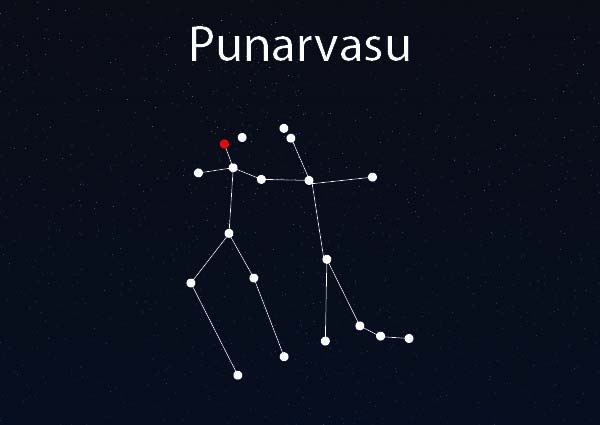
The possibility of obvious endlessness is additionally indicated by Punarvasu and it has all the attractive characteristics. It gives one an impression of a positive remodel from dimness to light. Actually, the interaction of alternate extremes is the substance of this nakshatra.
Travel, journey, creative mind, development, establishment of altars, adoring the Mother Goddess, child care, purchasing homes and vehicles, horticulture, agriculture, beginning work in a building, marriage, and education can be performed during this nakshatra.
13. Uttara Phalguni
Utthara phalguni (26.40 Leo-10.00 Virgo) is controlled by Bhaga, the God of Happiness. It is the twelfth asterism and is managed by the Sun. Utthara phalguni demonstrates the craving for association. Utthara phalguni is a ‘manushya’/human nakshatra, engaged with material issues, the attention being on fellowship, family, culture and society.

Utthara phalguni relates to the Hindu month of phalguna, or spring and thus brings out all the attributes of the period. This nakshatra looks like the back legs of a bed and it converts into ‘the last mentioned, ‘the last reddish one’ or ‘the last fig tree’. The names that are generally given to the Sun, ‘illuminator’, ‘the extreme one’, ‘the remorseless and the sharp one’, ‘one who gives flourishing’ are achievements in demonstrating the usefulness of Utthara phalguni.
Beginnings, managing individuals in power, buying property, marriage, promises, ceremonies, profession, paternal activities, and conciliatory exercises can be done during this nakshatra.
14. Uttara Bhadrapada
Uttara bhadrapada (3.20-16.40 Pisces) is administered by Ahir Budhnya, who represents the snake of the environment’s underbelly. It is subsequently implied as a Warrior Constellation and awards success to the universe.
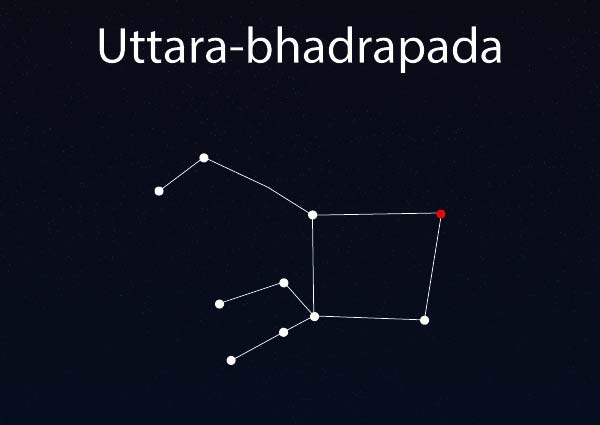
Uttara bhadrapada lies in the twin groups of stars of Pegasus and Andromeda. It tends to be converted into ‘somebody with fortunate feet’ or ‘somebody having the feet of a stool or Uttar prosthapada’.
The electional idea of Uttara Bhadrapada is Sthira, which means “fixed or consistent.” Uttara Bhadrapada is an amazing nakshatra for:
- Marriage functions
- Building a home
- Buying land
- Planting trees
15. Revati
Revathi (16.40-30.00 Pisces) is controlled by Pushan, the sustenance giving part of the Sun God. The reference of this last and last nakshatra is the excursion, from this world into the following.
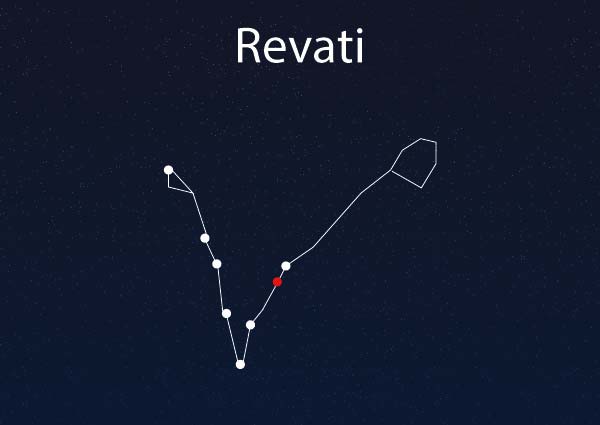
In plain interpretation, Revathi alludes to one who is affluent and this is passed on by the embodiment of this asterism at numerous levels. On the other hand, Revathi can be made an interpretation of into ‘the capacity to rise above’. English words like ‘dream’, ‘reverend’, ‘spinning’ and ‘speak to’ have been gotten from Revathi, the most charming of nakshatras.
Best Nakshatra for Griha Pravesh 2020
| Date | Day | Nakshatra | Timings |
| 2nd July 2020 | Thursday | Anuradha | 05:27 am to 1:14 am |
| 3rd July 2020 | Friday | Moola | 12:08 am to 5:28 am |
| 10th July 2020 | Friday | Purva Bhadraprada | 5:31 am to 5:31 am |
| 17th July 2020 | Friday | Mrigashira | 8:28 pm to 5:35 am |
| 23rd July 2020 | Thursday | Magha, Purva Falguni | 5:38 am to 5:38 am |
| 24th July 2020 | Friday | Purva Falguni | 5:38 am to 4:03 pm |
| 31st July 2020 | Friday | Moola | 7:05 am to 5:43 am |
| 6th August 2020 | Thursday | Purva Bhadraprada | 11:18 am to 5:46 am |
| 7th August 2020 | Friday | Purva Bhadraprada | 5:46 am to 1:34 pm |
| 14th August 2020 | Friday | Mrigashira | 5:50 am to 5:50 am |
| 20th August 2020 | Thursday | Purva Falguni | 5:53 am to 11:51 pm |
| 27th August 2020 | Thursday | Moola | 12:37 pm to 5:57 am |
| 28th August 2020 | Friday | Moola, Purvashadha | 5:57 am to 5:58 am |
| 3rd September 2020 | Thursday | Purva Bhadraprada | 6:00 am to 8:51 pm |
| 4th September 2020 | Friday | Revati | 11:28 pm to 6:01 am |
| 10th September 2020 | Thursday | Mrigashira | 1:39 pm to 6:04 am |
| 11th September 2020 | Friday | Mrigashira | 6:04 am to 3:25 pm |
| 22nd October 2020 | Thursday | Purvashadha | 6:26 am to 12:59 am |
| 29th October 2020 | Thursday | Revati | 12:00 pm to 6:32 am |
| 30th October 2020 | Friday | Revati | 6:32 am to 2:57 pm |
| 6th November 2020 | Friday | Punarvasu | 6:45 am to 6:38 am |
| 26th November 2020 | Thursday | Revati | 6:53 am to 9:21 pm |
| 3rd December 2020 | Thursday | Punarvasu | 12:22 pm to 6:59 am |
| 4th December 2020 | Friday | Punarvasu | 6:59 am to 1:39 pm |
| 31st December 2020 | Thursday | Punarvasu | 7:14 am to 7:49 pm |
List of 27 Nakshartras in Vedic Astrology
| Nakshatra | Ruler | Deity | Symbol | Alphabets |
| Ashwini | Ketu | Ashwini Kumar | Horse’s Head | Chu, Che, Cho, La |
| Bharani | Venus | Yama | Yoni | Lee, Lu, Lay, Lo |
| Krittika | Sun | Agni | Razor | Aa, Ee, Oo, Ay |
| Rohini | Moon | Brahma | Chariot | O, Va, Vi, Vu |
| Mrigashira | Mars | Chandra | Deer’s Head | Ve, Vo, Ka, Kee |
| Ardra | Rahu | Rudra | Tear Drop | Ku, Ghaa, Kha, Cha |
| Punarvasu | Jupiter | Aditi | Quiver | Kay, Ko, Ha, Hee |
| Pushya | Saturn | Brihaspati | Udder | Hoo, He, Ho, Dah |
| Ashlesha | Mercury | Nag | Serpent | Dee, Doo, Day, Doh |
| Magha | Ketu | Pitras | Throne | Ma, Mi, Mu, Me |
| Purna Phalguni | Venus | Bhaga | Hammock | Mo, Ta, Tee, Too |
| Uttara Phalguni | Sun | Aryaman | Fig Tree | Tay, To, Pa, Pee |
| Hasta | Moon | Surya | Hand | Pu, Sha, Nu, Tha |
| Chitra | Mars | Vishwakarma | Jewel | Pe, Po, Ra, Re |
| Swati | Rahu | Vaayu | Coral | Ru, Re, Ro, Ta |
| Vishakha | Jupiter | Indra | Arch | Ti, Tu, Te, To |
| Anuradha | Saturn | Mitra | Lotus | Na, Ni, Nu, Nay |
| Jyestha | Mercury | Indra | Amulet | No, Ya, Yi, Yu |
| Mula | Ketu | Nirriti | Roots | Ye, Yo, Bha, Bhe |
| Purva Ashadha | Venus | Varuna | Fan | Bu, Dah, Bha, Dha |
| Uttara Ashadha | Sun | Vishvadevas | Tusk | Be, Bo, Ja, Ji |
| Shravana | Moon | Vishnu | An ear | Ju, Je, Jo, Gha |
| Dhanistha | Mars | Vasus | Drum | Ga, Gi, Gu, Ge |
| Shatabhisha | Rahu | Varuna | 1000 stars | Go, Sa, si, Su |
| Purva Bhadra | Jupiter | Ajaikapada | Funeral cot | Se, So, De, Di |
| Uttara Bhadra | Saturn | Ahirbudhnya | Water snake |

